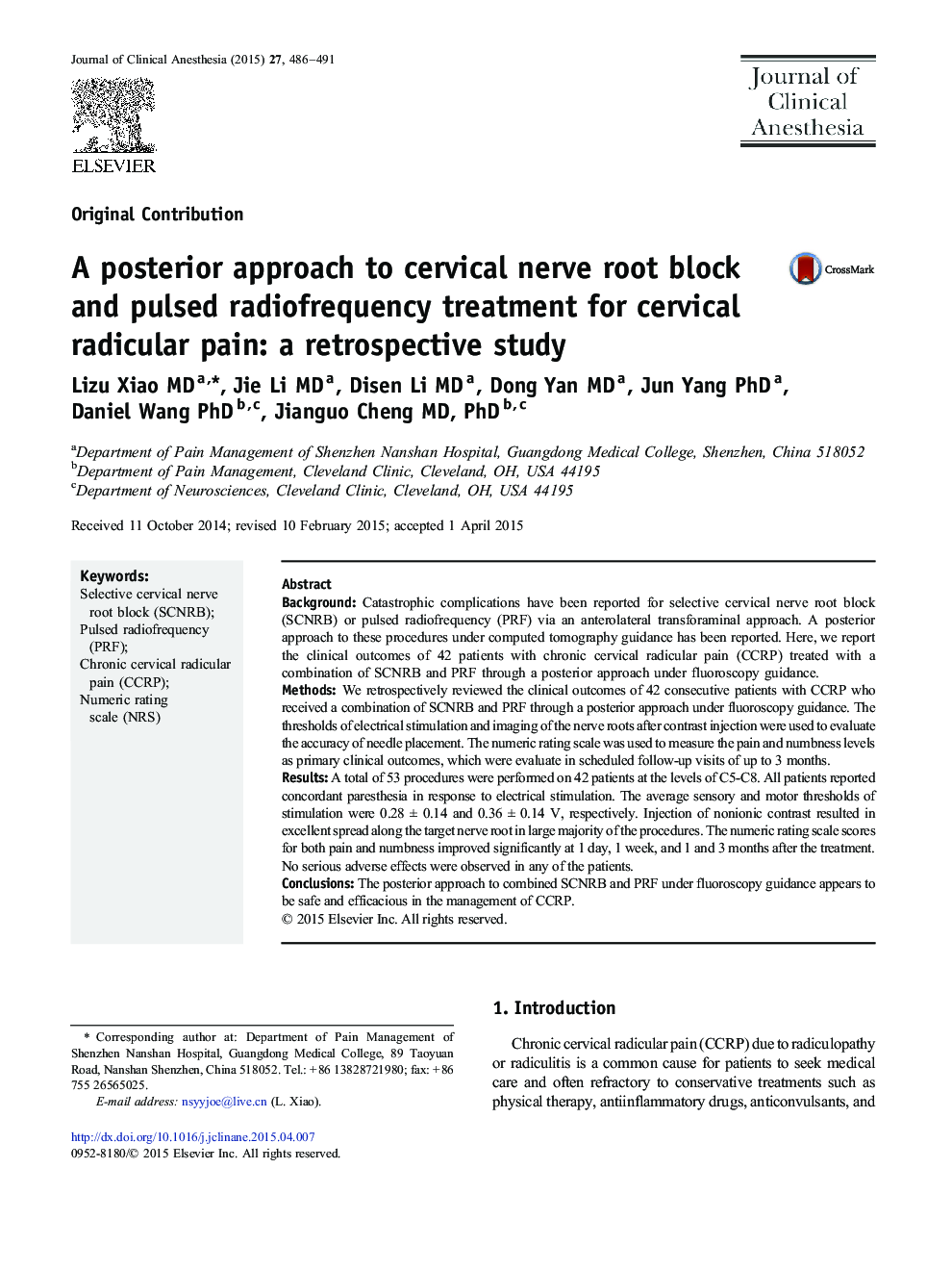| کد مقاله | کد نشریه | سال انتشار | مقاله انگلیسی | نسخه تمام متن |
|---|---|---|---|---|
| 2762225 | 1150705 | 2015 | 6 صفحه PDF | دانلود رایگان |
• Combining cervical nerve root block with pulsed radiofrequency treatment achieved clinically meaningful and statistically significant pain relief for more than 3 months.
• The posterior approach to these procedures under fluoroscopy guidance appeared safe. No significant adverse effects were observed in any of the 42 patients.
BackgroundCatastrophic complications have been reported for selective cervical nerve root block (SCNRB) or pulsed radiofrequency (PRF) via an anterolateral transforaminal approach. A posterior approach to these procedures under computed tomography guidance has been reported. Here, we report the clinical outcomes of 42 patients with chronic cervical radicular pain (CCRP) treated with a combination of SCNRB and PRF through a posterior approach under fluoroscopy guidance.MethodsWe retrospectively reviewed the clinical outcomes of 42 consecutive patients with CCRP who received a combination of SCNRB and PRF through a posterior approach under fluoroscopy guidance. The thresholds of electrical stimulation and imaging of the nerve roots after contrast injection were used to evaluate the accuracy of needle placement. The numeric rating scale was used to measure the pain and numbness levels as primary clinical outcomes, which were evaluate in scheduled follow-up visits of up to 3 months.ResultsA total of 53 procedures were performed on 42 patients at the levels of C5-C8. All patients reported concordant paresthesia in response to electrical stimulation. The average sensory and motor thresholds of stimulation were 0.28 ± 0.14 and 0.36 ± 0.14 V, respectively. Injection of nonionic contrast resulted in excellent spread along the target nerve root in large majority of the procedures. The numeric rating scale scores for both pain and numbness improved significantly at 1 day, 1 week, and 1 and 3 months after the treatment. No serious adverse effects were observed in any of the patients.ConclusionsThe posterior approach to combined SCNRB and PRF under fluoroscopy guidance appears to be safe and efficacious in the management of CCRP.
Journal: Journal of Clinical Anesthesia - Volume 27, Issue 6, September 2015, Pages 486–491
